
[ add comment ] ( 30 views ) | permalink |




 ( 2.9 / 2134 )
( 2.9 / 2134 )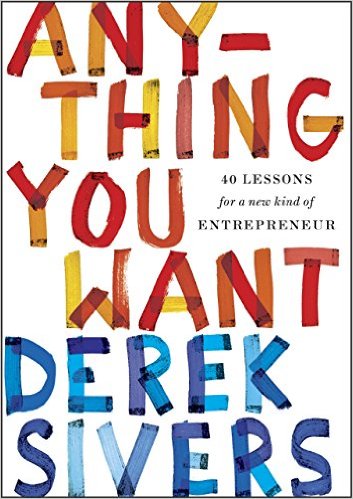
How does someone go from $500 a week to growing a business worth $22 million. Derek Sivers did just that.
In his ebook Anything You Want: 40 lessons for a new kind of entrepreneur Derek openly shares stories and philosophies based on his experience of building a 22 million dollar hobby called CD Baby.
I think Derek Sivers rocks. To explain why, I’ll tell a quick story about how I came to do this post.
A friend of mine mentioned the ebook to me. So I checked out Derek’s site, and although there were lots of links to various Amazon sites to buy it, I couldn’t find anywhere to buy an ePub version. I’ve got nothing against Kindle, I just love using Kobo on my phone and laptop. So I sent Derek an email asking about PDF or ePub versions. Within a few hours I had a nice email back from Derek telling me how I could get one. Cool eh when the author responds like that!
Like many people Derek became an entrepreneur by trying to solve his own problem. In ten years Derek went from starting something as a hobby to accidentally growing it into a big business. Later selling the business for $22 million and giving it away to the charity he founded for music education.
As a musician in 1997 he made a CD of his music that he sold at his gigs. He wanted to sell it online and was told by the big online records stores they couldn’t sell my CD direct without a major distributor. So he said screw it and set up his own online store.
This was 1997, so people like Derek who wanted to sell direct didn’t have Selz to make life simpler. So Derek had to spend $1000 to set up a merchant account with a bank and wait 3 months for paperwork. The bank even sent an inspector to his home! Derek then had to learn coding to build his own buy now button and a friend asked he could sell his CD too. The business grew from there as an online store, and then when iTunes launched as a digital distributor.
Derek’s story struck a chord as it’s exactly why we’ve built Selz. To help the Derek’s around the world sell their work online without having to learn SQL and Html themselves or integrate multiple tools.
His book Anything You Want is a collection of learnings from ten years compacted into a book you can read in an hour.
Here are a couple of the “wow” lessons that stuck with me.
Follow your own path
Do what makes you happy. Start now, start small. Starting something you’re passionate about doesn’t need heaps of money. CD Baby was started with $500.
Focus on your fans not on yourself
Business is not about making money. It’s about making dreams come true for others and for yourself. Make everything decision on what to do next, on what’s best for your fans. Focusing 100 percent on solving real problems for real people, and on thrilling your existing customers and they’ll tell everyone for you.
Be persistent
Derek found that success breeds success and opens up all those doors that were previously nailed shut. The secret to success comes from persistently improving not from continually promoting something that’s doesn’t work. Keep presenting new ideas or improvements and if you get a wow I need this and I’d be happy to pay for it, do it, otherwise don’t push water uphill.
Be clear, don’t try to overcomplicate things
The best idea is to use plan simple language to explain yourself. One unclear sentence might cost you $5000? Well that’s what faced Derek regularly when he’d sit down to write his emails to the 2 million CD Baby customers. Thousands of confused email replies would be generated if the email wasn’t clear and this would take his team a week to respond to them. Ouch!
Proudly exclude people
You can’t please everyone all of the time. So don’t be afraid to focus on your niche, tell people who you are and what you’re about, and feel comfortable with telling people what you’re not. Regularly, when CD Baby was popular Derek would turn away record labels with new artists who approached him as he had built the site for the independent musician, not for major label acts.
Plan for today, not for tomorrow
When have you ever made plans that went 100 percent to plan. No me neither. No plans ever go as expected. Don’t worry if you don’t have a cunning master plan for lifelong happiness or world domination. The trick is to focus on what is important to you and on what you can do today. The most brilliant ideas are worth nothing unless they are executed. Often it can be tiny changes that make a difference.
Remember to find tiny ways to make people smile :)
A great example Derek uses is the goofy and funny your order he wrote about your CD being placed on a satin cushion before being shipped. This email was sent out with every order. It was so quirky and loved by people you can Google it for “private CD Baby jet” where people have posted it on the web.
Be yourself
You can be as unconventional, different, even quirky as you want. Just be authentic and do what excites you, if it makes you smile and you’re happy, then its ok.
Anything You Want is a great lunchtime read and it managed to make me smile despite it being a wet, cold and windy lunch break. I highly recommended it, especially if you’re following your passion as a part time project. Anything You Want shows you never know where things might lead you to.
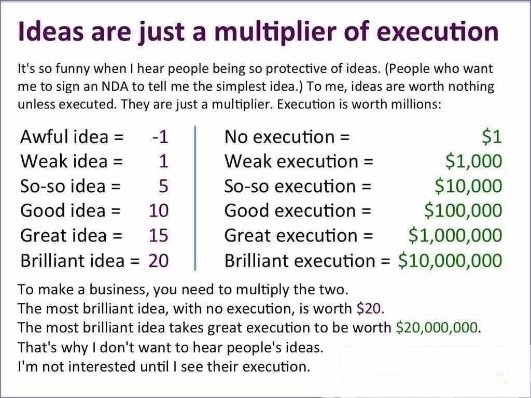
[ add comment ] ( 64 views ) | permalink |




 ( 3.1 / 1993 )
( 3.1 / 1993 )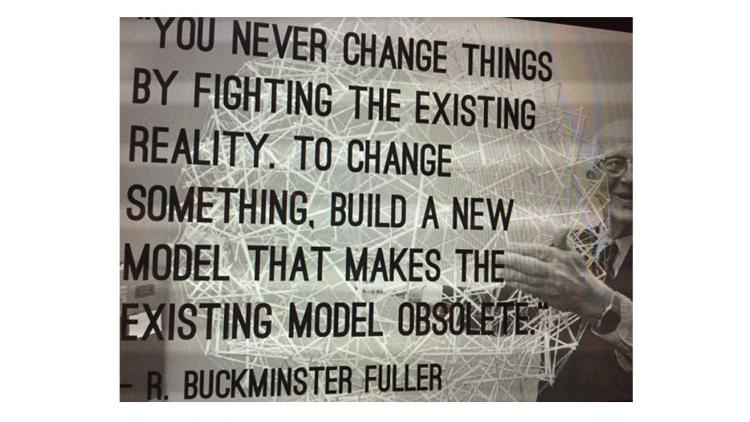
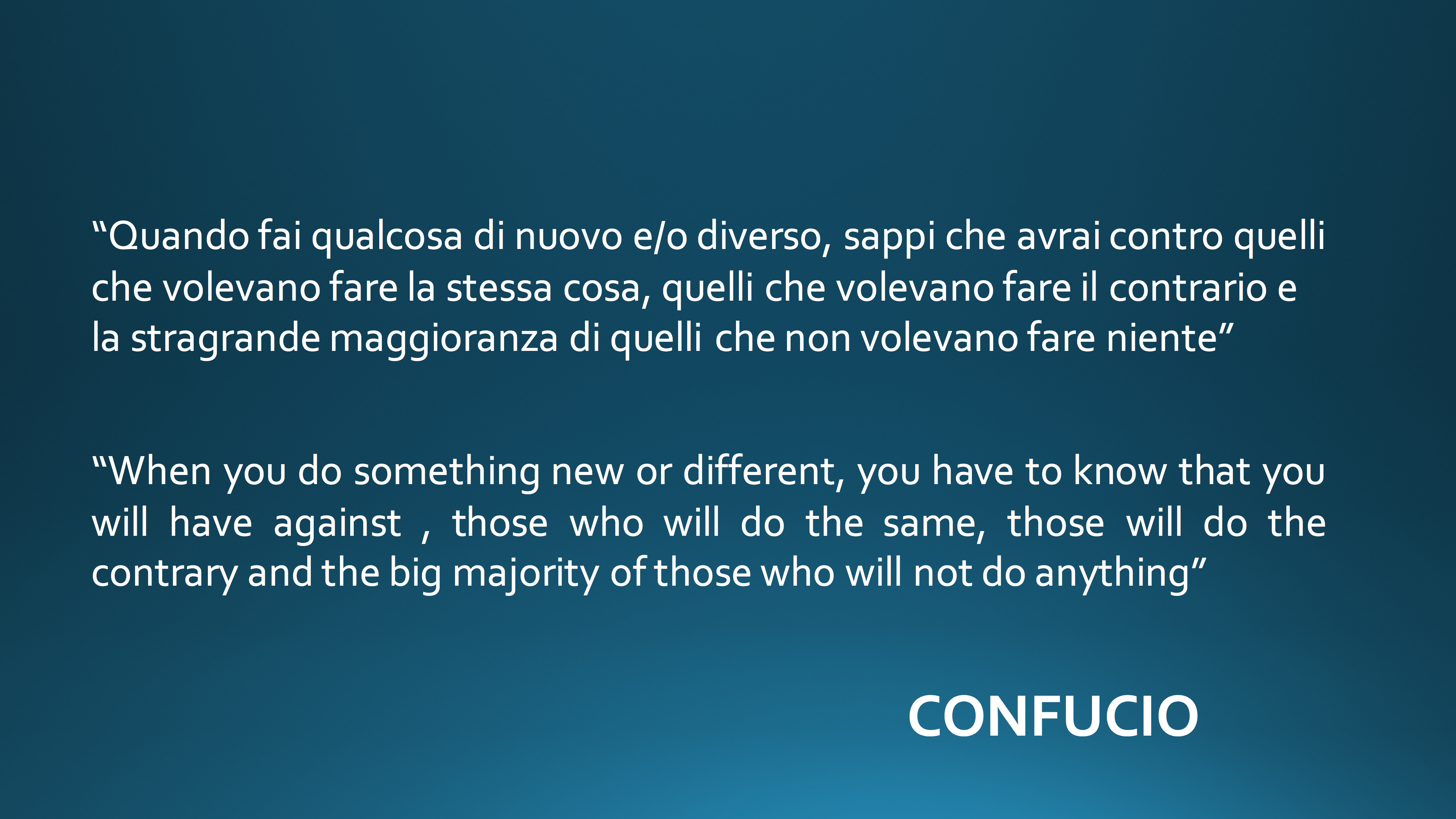
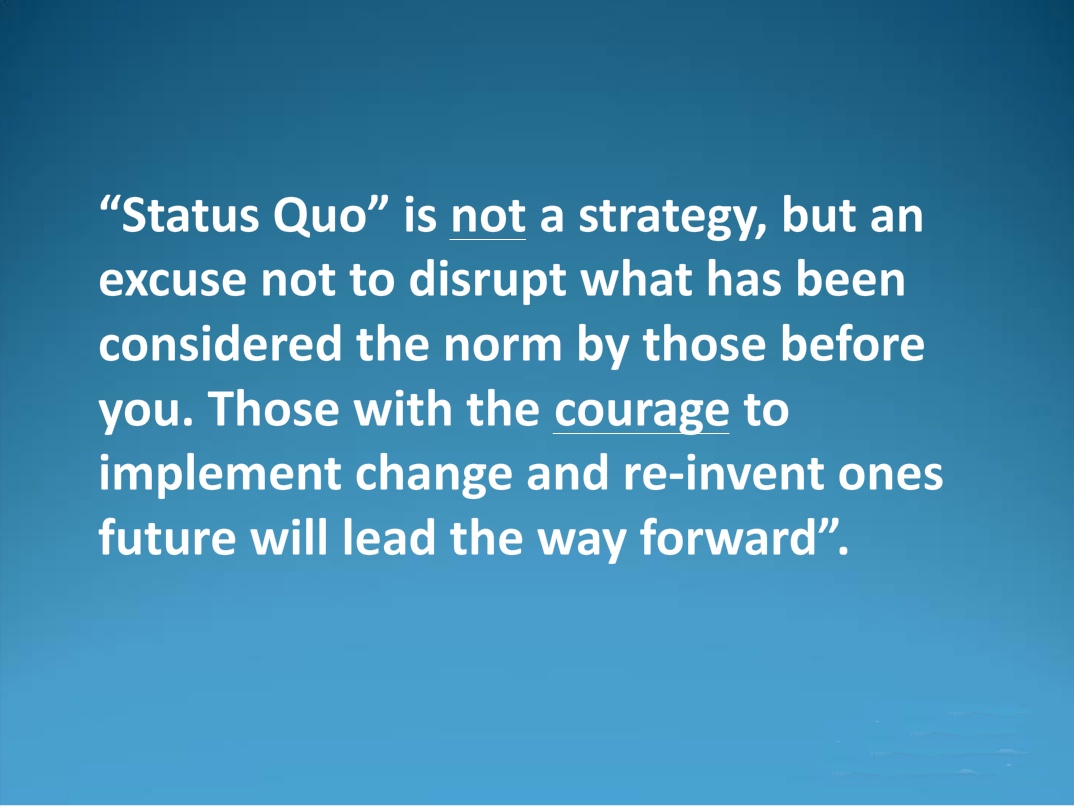
[ add comment ] ( 29 views ) | permalink |




 ( 2.9 / 1957 )
( 2.9 / 1957 )
If you think some people are born creative and you're not one of them, think again.
What makes some people more creative than others is that they nurture their creativity. In fact, experts say that creativity is primarily a learned skill. And like any other skill you want to learn, it requires that you put in some hard work and effort.
It's not enough to just want to be creative--it takes daily dedication to push yourself into original thoughts and expressive ideas. Too often, though, the biggest thing standing in the way may be your own habits.
Here eight of the worst creativity killers. If you recognize them in your life, cut them out now.
1. Premature judgment.
To be creative, you have to allow yourself to be able to generate ideas and innovate freely and without judgment. If you judge your ideas too early in the process, you end up second-guessing and creating less. Separate the two processes, and let your initial run of ideas flow without interruption. There will be time later to select and polish the best.
2. Lack of courage.
If you're fearful of taking chances, scared of venturing down new roads, timid about taking the road not traveled on, you're going to find it difficult to ever venture off the main roads. Creativity requires taking a chance and being courageous. Fear is the biggest enemy of creativity.
3. Avoidance of failure.
You can't be bold and creative when you're afraid of failure. If your goal is to avoid failure and mistakes, you will play it out conservatively and quietly. Creativity means taking chances and venturing down some dead ends. The really great ideas you come up with will be more than worth it for all the dumb mistakes.
4. Comparing yourself with others.
When you compare yourself with others, you rob yourself of your own unique innovation and imagination. Set your own standards of creativity and don't compare yourself with anyone else. Allow yourself to create and be different. The only unique contribution you can ever make in this world will be born of your creativity.
5. Discomfort with uncertainty.
Many people fear ambiguity; they want to know that things will make sense. But creativity requires the courage to let go of certainty. It is within this courage to be fearless that creativity will flow. Creativity is a habit, and the best creativity is the result of good habits that allow you to use your imagination and innovation. To be truly creative, you must lose the fear of being wrong.
6. Taking criticism personally.
Feedback is always good, and criticism is OK if we don't take it personally. We all need someone who will give us feedback; that's how we improve. Fearing criticism is fearing growth.
7. Lack of confidence.
A certain level of uncertainty accompanies every creative act, and a measure of self-doubt is healthy, but if your lack of confidence is overwhelming and long-lasting, it can cost you your abilities. The best way to create is to first connect with your self-confidence.
8. Analysis paralysis.
This terrible condition renders you unable to make a decision because of information overload. Every creative person understands that to overthink can be the greatest enemy of creativity.
If you want to create, remember: The more you feed your skill of creativity, the better you will be at it. So stop the bad habits that are destroying your creativity.
[ add comment ] ( 46 views ) | permalink |




 ( 3 / 2138 )
( 3 / 2138 )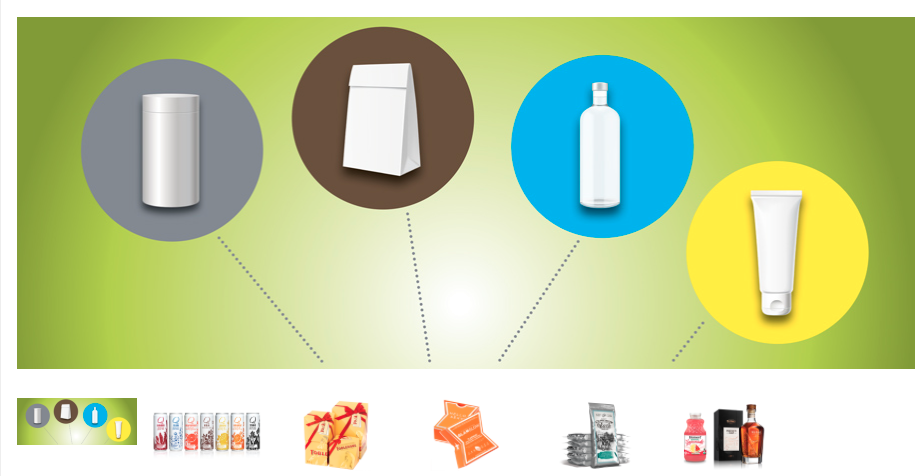
A bevy of considerations go into choosing a material for your brand’s packaging including product protection and visibility, what your competition is doing and buyer preferences.
In addition, advancements have been made in nearly every material — from sustainability to keeping food fresh longer to better finishing techniques — and the industry has a greater understanding of both what customers truly see at shelf and expect from a package, thanks to eye-tracking and other research methods.
So, what is a brand to do? Go with the material you’ve always used or try out a new technology? Stick within the category norms or break the mold? The trouble and the beauty is that there is no single right answer.
BRANDPACKAGING gathers insight about major material categories from the organizations that support them and learns why they stand behind their material. Use this information as a jumping point, because choosing the right material is most definitely an art.
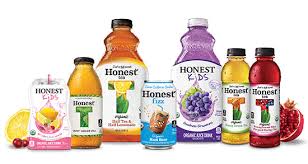
METAL
“Cans have long been the reliable, functional package for the beverage industry,” says Sherrie Rosenblatt, vice president, marketing and communications, Can Manufacturers Institute (www.cancentral.com). “Consumers want to feel a connection with their beverage, and brands can help make that happen. Our research showed that the 360 degree graphics on cans sell brands, offering a unique branding experience that consumers appreciate. In fact, 48 percent of consumers indicated that they have tried a new type of beverage based purely on the look of its container label and graphics. So, brand owners have the opportunity to use the beverage can as a branding connection with consumers that can lead to sales.”
“We’ve seen a preference for cans in the energy drink and craft beer markets because they are an ideal canvas for exciting graphics and are the key to protecting product integrity,” she continues. “Graphic innovation and protecting product integrity are just two of the reasons there is further brand adoption of cans for cold brew coffees, carbonated water and wine.”

Rosenblatt believes brands can benefit from cans’ multiple points of appeal for the customer:
“These days, it takes a well-round approach to packaging to impact the consumer experience and purchasing decision. Based on the branding factors noted above and through sustainability and taste, cans offer a significant opportunity to connect with consumers. According to our research, consumers feel that cans actually enhance the taste experience. For example, relative to a plastic bottle, 69 percent of consumers said that a chilled beverage can feels colder and more refreshing. And, notably, 81 percent of consumers indicated that the infinite recyclability of cans matters to them. So, the can has the ability to create consumer touchpoints on factors that matter: taste, sustainability, branding innovation and performance.”
PAPERBOARD
“Last year, our industry launched the ‘Paper & Packaging – How Life Unfolds’ campaign, a national promotional initiative that aims to foster an appreciation for paper products within consumers across the country,” says Ben Markens, president, Paperboard Packaging Council (paperbox.org). “As it gains momentum, the campaign should not only bolster the use of paperboard packaging, it should also enhance the marketing efforts of consumer branded companies.”
Sustainability is one reason Markens recommends paperboard packaging.
“Consumers and brands will continue to value the positive connection between paperboard and the environment,” says Markens. “Because paperboard is renewable and recyclable by its very nature, it will fit perfectly into a future where sustainability will be fully integrated into everyday manufacturing processes as well as the lives of consumers.”
Another reason brands may choose paper-based packaging is its versatility. Two top winners from last year’s North American Paperboard Packaging Competition demonstrate this fact.
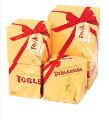
The Ellis Group’s Toblerone One by One Gifting Box, FX Creative/Mondeléz Canada
This family of cartons, which won Paperboard Package of the Year, represents a radical departure from Toblerone’s previous package designs yet remains true to brand. In fact, the angular structures embody the company’s tagline, “Born to be deliciously different.”
Designed as a gift that does not require wrapping, the graphics feature a ribbon that flows seamlessly between lid and bottom. The cartons are also right-sized to eliminate the need for wasteful false bottoms or void fillers, and they’re optimized for efficient pallet configuration. They do everything a carton should: drive sales and breathe new life into brands by way of innovative structures and exquisite graphics while providing supply chain efficiencies and waste reductions.
Dynamic and striking, this Folding Carton of the Year entices consumers at first sight with its distinctive “X” shape, bright orange printing and the look of an upscale rigid box. Picking up the pack, consumers feel its luxurious soft touch coating and notice the fine detail foil stamping. At home, after removing the lid, they’re delighted to see the signature “hello sexy” panel, under which the product is inset into even more coated, foil-stamped board.
Providing an immersive brand experience from store shelf to unboxing and beyond, this carton shows off paperboard’s marketing capabilities — it’s a pack you simply can’t put down.
FLEXIBLE
“Thanks to great innovation and technology, today’s flexible packaging is delivering brand value because of its ability to fit on-the-go consumer lifestyles,” says Marla Donahue, president and CEO, Flexible Packaging Association (www.flexpack.org). “In FPA’s recent Brand Value Study, more than 60 percent of consumers said packaging attributes such as ease of storage, ability to be resealed and ease of opening were very, extremely or absolutely important. For brand owners, this means products in flexible packaging can command a premium price at retail. In fact, approximately 60 percent of consumers we surveyed said they are willing to pay more for tangible, functional packaging benefits such as ability to reseal, ability to extend product life, easy to store and easy to open.”
Donahue points out that those drivers of convenience and ease of use will continue to propel flexible forward as a top choice by brands.
“Flexible packaging is going to continue to grow as brand owners strive to meet the demands of consumers for convenience,” says Donahue. “Flexible packaging is the second largest packaging segment in the U.S., and one of the fastest growing. In our Brand Value Study, 97 percent of brand owners who currently use flexible packaging indicated they planned to use the same amount or more in the next five years. Flexible packaging is already a sustainable option due to its lightweight design and ability to extend food life, and the industry is constantly working to enhance sustainability even more. As brand owners strive to meet the consumer lifestyles and expectations, we’re going to see more and more machinery and materials that increase the sustainability of flexible packaging.
“Through our Brand Value Study, we’ve confirmed that flexible packaging fits contemporary lifestyles and retail trends while also having a positive, documented impact on brand value. We also know that consumers are willing to pay premium prices for product attributes enhanced by flexible packaging, to meet their needs for convenience and functionality.”
GLASS
“Beverage brands are turning to glass packaging to help them meet growing consumer preferences for authentic, natural and artisanal products,” says Lynn Bragg, president, Glass Packaging Institute (www.gpi.org). “For packaging, this means more natural, elemental materials such as glass. The transparent and sustainable qualities of glass packaging also reinforce this ethic. In addition, glass helps reach consumers who want to splurge on super-premium and craft spirits that are part of a growing cocktail culture. According to the Brewers Association, U.S. brewers were at a record high of 4,144 in 2015. Its data also showed that ‘locally made’ is important to over half of craft beer buyers. Glass is the only type of packaging commonly used for beer whose raw materials can be completely sourced from within North America. And most brewers, too, are within just several hundred miles from a glass manufacturing facility.”
As Bragg touched on, luxury categories often turn to glass to house their products.
“On the premium side, consumers aren’t necessarily looking for excess or exclusivity, but simple luxury,” says Bragg. “For glass packaging, this means bottles with thick bases and minimal decoration, but ones that work together with label designs to present a harmonized, high-quality image. Glass can be molded into virtually any shape for a unique profile, to reinforce a brand image or build shelf distinction. Shapes, colors, embossing, labeling, decorating and closures can all create an exceptional consumer experience. Blown-in glass decoration, such as embossing and debossing techniques, have become important for brands hoping to create a unique look and tactile appeal.”
Consumer premiumization and product innovation has delivered growth in distilled spirits, with volumes up 2.3 percent in 2015, says Bragg.
“Super-premium whiskeys were particularly popular among American consumers who are splurging on spirits. For example, Campari launched a limited-edition, super-premium release of Wild Turkey called Master’s Keep in an intricately embossed cosmetic flint bottle. For spirits beverage brands, glass packaging is really the only way to showcase and properly package premium and super-premium products.”
Glass also has sustainable properties, and Bragg says those keep getting better.
“Glass beer and wine bottles are about 40 percent lighter than they were 20 years ago — and that continues today. For example, glass manufacturer O-I recently worked with Adnams to develop the lightest branded 500ml glass premium ale bottle, weighing in at 280g. Ardagh Group has debuted its 1.5L Bordeaux wine bottle, which weighs a mere 670g (24 ounces). These lighter weight bottles reduce carbon footprint and the use of raw materials and energy.”
As was mentioned earlier, customer preference plays a large role in packaging material — and millennials want sustainability as well as that small-batch, local feel from the brands they buy.
“In the past several years, one of the biggest changes in the packaging market is the competition to attract the swell of millennials, which by 2020 will account for one-third of the adult population (about 83 million),” says Bragg. “The ripple effect has been a rise in craft in nearly every beverage category, functional foods and beverages, and smaller formats. There is also more focus on health and sustainability. Glass manufacturers have become more nimble to respond quickly to this emerging customer base of smaller, more local producers. This includes expanded lines of stock bottles, mold innovations, and pallet storage and delivery.
“The millennial consumer also has different expectations than previous generations. For example, they are looking for transparency, sustainability and local brands that offer new/interactive experiences and premiumization.”
Glass containers are poised to meet these expectations, but there is a lot of competition in the packaging arena to win over these consumers, Bragg says.
“Consumers choose glass for many reasons: taste, transparency, health and safety, and premium appeal. Being able to see the product inside and taste the difference matters to consumers. Amber glass bottles are also 99.9 percent effective against light. And because glass is an excellent insulator, it keeps a product colder longer than other packaging choices.”
According to Bragg, brands also may look to glass for its composition and natural appearance.
“An EcoFocus survey found that 75 percent of consumers prefer glass packaging because it preserves the taste or flavor of the food and beverages it contains. This is borne out by science. Science By Design founder and scientist Sarah Risch recently explained why Coke tastes better in glass — it’s all about how the fizzy drink reacts to the material it is being held in, and it’s better when surrounded by glass than a can or PET.
“Glass also has the distinction of being the healthiest packaging choice,” she continues. “Brands that are making organic, clean label and other ‘functional’ beverages — a growing market category — want a package to match. Glass is the natural choice: Made from all-natural ingredients, glass is nonporous and impermeable. Unlike other packaging, glass does not require a petroleum-based liner. Because glass is chemically inert, there is virtually no interaction with a food or beverage to interfere with flavor and aroma, or chemicals that migrate into the product that may compromise consumer health.”
To illustrate her point of natural, Bragg shares the example of Honest Tea, Global Packaging Design Award winner.
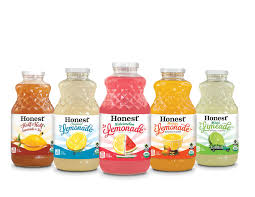
Honest Tea
A product’s packaging speaks volumes about a brand and what’s inside. Well-executed packaging communicates to consumers why a product and brand are unique. Designed to turn heads, Honest Tea’s Summer Refreshers product line delivers on that mission with its striking design.
The eye-catching pink liquid, apparent through the 32oz glass bottle, draws you in, while the label design highlights the fresh-tasting flavors of organic watermelon and lemons as the “sails” of a boat gliding along a refreshing pink sea. Playing on the free and fanciful memories of summer fun, the bright flavor mirrors the vibrancy of the label with the Honest twist of less sugar and fewer calories than similar bottled lemonades. The cheerful and inviting label was designed in-house using the same whimsical style of the four other beverages in the Summer Refreshers lineup.
Ardagh Group’s Glass – North America division has manufactured Honest Tea’s 32oz glass bottles since March 2014.
Edit by Laura Zielinski - Brandpackaging
[ add comment ] ( 75 views ) | permalink |




 ( 2.9 / 1916 )
( 2.9 / 1916 )

 Calendar
Calendar